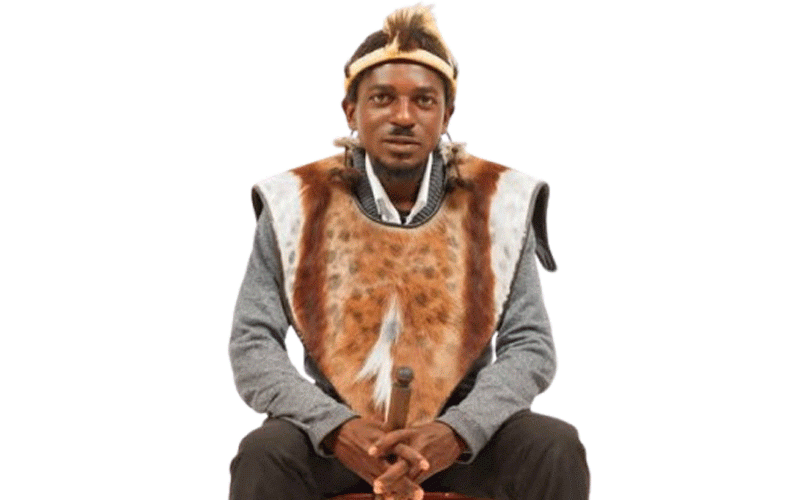
By Grant Moyo
Fashion designers Cleedon Lotriet and Chantal Fraser Lotriet regard the decision to merge their clothing brands Clix Clothing and Chante Clothing as a bold move that is astoundingly paying off.
Having tied the knot in 2018, the couple said working together as Clix and Chante Clothing (C&C Clothing) has solidified their creativity and helped them espouse a similar vision.
The designers’ luxury lifestyle brand specialises in special occasion apparel as well as elegant clothing cutting across almost everything fashionable listing dinner dresses, suits, wedding gowns, theatre costumes, sweat pants, jackets, head gear, and bags.
The past years have also seen the pair branch into corporate wear manufacturing, homeware and interior decoration.
“Fusing Clix Clothing and Chante Clothing to create C & C Clothing (Clix and Chante Clothing) was the best move we ever did. Two heads are better than one, unlike other couples we can’t imagine not working together. Fashion brought us together, our opposites and competitiveness is what makes us excel. We do have our weaknesses so we cover each other’s imperfections, so to speak,” Chantal said.
With careers dating back to early 2000, the couple acknowledged how they are gradually finding stability and purpose. They said their over-a-decade working experience in the fashion industry has helped them identify the means to build a sustainable livelihood from designing. In their quest to build a legacy, the gifted designers pointed out planning as a requisite.
“If you sew, sketch, cut and design, you need to have a game plan of getting more stitching machines, pursuing viable lucrative business deals, and sustaining good relations with clients as well as creatives. Sometimes plans don’t go accordingly, but you need to have back-up plans that will help you press on and secure targets within a particular time frame,” the designers said.
- Chamisa under fire over US$120K donation
- Mavhunga puts DeMbare into Chibuku quarterfinals
- Pension funds bet on Cabora Bassa oilfields
- Councils defy govt fire tender directive
Keep Reading
“Last year we had really played a down low. We are in a plan where we are building our brand. We are not worried about a lot of things, we are only worried about putting certain ideas in place. When we reach the next stage of our plan, we will slowly start ticking off our achievements and setbacks.”
Inspired by Dolce & Gabbana, an Italian luxury fashion house, the designers said doing thorough research on global brands influenced the drive to team up and work towards securing essential resources crucial to the success of their luxury lifestyle brand. They also emphasised on the pivotal role Zimbabweans can play in making them realise their dream.
“Dolce & Gabbana became stronger when they teamed up. When they came into the mainstream doing runways, they had their ground covered having established their factories and workshops. Nike (America) and Louis Vuitton (France) created their own industry that was first supported by their people before they became global brands, meaning they are selling products that their people are supporting. The only way we can get to the global level is if locals support us so that we can buy machinery and equipment that will help us improve the quality of our clothing articles. For instance, a particular suit that is made in hours in China can take us two days due to the differences in the type of machinery used,” the designers said.
“If we want to compete internationally, we have to start somewhere, we have to create our own style to make it and stop imitating Italian designs by Gucci or Versace. Where we are getting it wrong as new school designers is that if we’ve been designing for the past five to 10 years, we automatically think we’ve made it. We tend to be fame-driven and at the end of the day we neglect investing in our brands. We need to understand that it takes years to create a track record.”
Looking back at Bulawayo Board of Designers (BBD), a great initiative which failed to reach its full potential, Cleedon said even though his vision to uplift and empower creatives was shortlived, he is grateful to have seen the prospect of his dream. He admitted to have taken loads of ideas from the experience and implemented them in the current fashion venture.
“BBD was a great idea, the whole plan behind it was to uplift creatives in the fashion industry mostly designers and models. We wanted to get a big place where designers would reside for three to five years, it was supposed to be a stepping stone to boost creatives and a platform to teach and exchange knowledge and skills. The idea was to have a designer academy and to encourage collaborations, and make creatives easily accessible to cooperatives and individuals interested in fashion,” Cleedon said.
“The business side and communication skills were what a lot of designers needed. We realised that you may be a talented designer but if you don’t know about marketing, branding, public relations and the business of fashion, you won’t go that far, hence we wanted every designer to benefit.”
Having started a family, the designer couple hinted that despite the daunting task of raising an infant, there is a thin line that separates business from personal life. Work is part of them, most of the conversations they have home are work-related. They also said since they previously had independent brands which they operated separately for years, there are times when they have conflicts of interests.
“Looking after a baby and juggling work is the hardest thing I’ve ever done. Though I do what I can when I can, I’m blessed to have my husband who has taken full reign at work while I take care of our child. Having a baby has actually made us work harder, knowing that there’s something that you can leave to somebody who will grow it more makes us, more hungry for success. What we are doing it’s no longer for us it’s for our little one, we are probably not going to reap much of it, she will credibly reap the great rewards, carry it on and see it grow,” Chantal said.
“Of course, there are times when we clash because we’re both alphas. If ideas differ we eventually try to find common ground. Either way it works out for the good, you get to learn to see the good side of your partner all the time. More or less we work together, it has made me more responsible and a better woman.
Our common ground is that we have the same vision, dream, and end goal. That’s the secret to success in marriage and business.”
Cleedon and Chantal have a set of five-year plans which they hope by 2030 would have yielded bountifully. The advantage of planning is that when goals are set and hard work is enforced, it increases the potential to build a legacy that will gradually grow and prolong the next generations.











